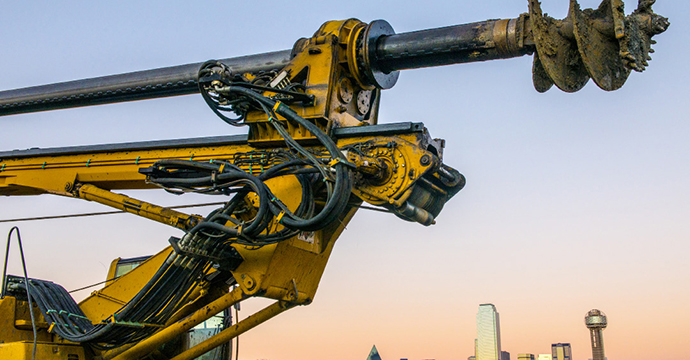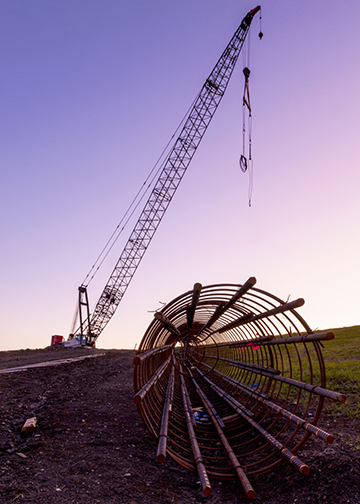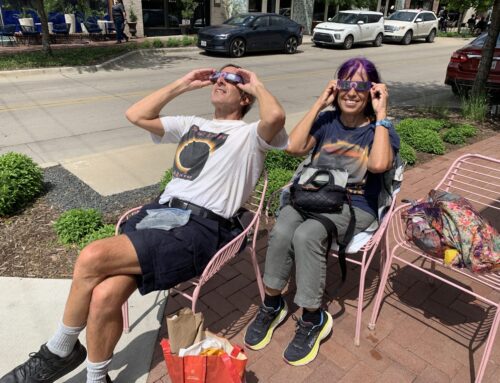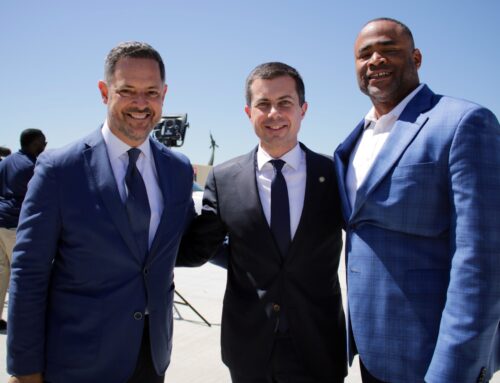The Trinity toll road and related projects would cost about $1.3 billion to build. The projects so far are unfunded, although the North Central Texas Council of Governments does have $143 million socked away for the toll road project, should it ever get off the ground. Since the project started falling out of favor — even its political creator, former Mayor Laura Miller, now opposes the project — we began envisioning the toll road’s death. And that brought us around to the money. How else could the NCTCOG spend that $143 million to benefit southern Dallas? So we asked a few Oak Cliff-based urban planners, and these are their answers.
Andrew Howard
Urban planner, The Better Block
I believe we should focus now on access to the river and the existing trails from neighborhoods instead of the current “build it and then figure that out later” mentality. So, I would focus on bike and pedestrian access, parking and finishing the streetcar.
Before we make the Trinity our central park, we need to clean it up! It is stanky, which is funny because you can swim in it in Fort Worth. So, where does it get dirty? The airport, roads and development are the biggest culprit, then cement ash from Irving and solvent runoff from Arlington. Mix that with our own poop water and you’ve got a stink!
So, we should invest in wetland restoration now to clean the Trinity for a future park. I think there is also about $30 million in park funds that could be detached from the tollway project. They are bundled in the environmental impact study with the toll road — a dirty trick to get us to stick with the park. I suggest putting those into light projects like soccer fields, pavilions and overlooks (stuff that the U.S. Army Corps of Engineers already allows).
We need an alternative plan to what is proposed now, because the way I see it, we need to dump the entire Trinity plan, park and toll road and all, and start over. Call it the biggest flop in municipal governance history and move on.
Amanda Popken
Economic development consultant, ASH+LIME Strategies
Fix roads.
Building a road from scratch is typically $1 million per mile, and depending on what needs to be fixed, funding for street repair would go a long way. I know in the North Oak Cliff neighborhood, where investment is already being attracted, Seventh Street from Bishop to Rosemont is badly in need of major repairs. Even Davis (the main thoroughfare through the active commercial district), from Zang to Rosemont has major potholes.
Street repairs alone won’t attract and create businesses, though.
Invest in neighborhoods.
Over 15 years ago a major investment in the small heart of Bishop Arts began the revitalization of the district into what we see today. In 1998 $2.6 million was spent (around $6.5 million in today’s dollars) on such a small area to add street trees, wider sidewalks, brick pavers, pedestrian bulb-outs at intersections framing parallel parking, and streetlights.
There are a number of similar shopping centers that could use similar treatments, if not more, to give neighborhoods vibrant districts, each with a unique design, attracting a neighborhood-specific set of offices, neighborhood services and retail for that area. Off the top of my head, I’d name Elmwood, Beckley from Claremont to Illinois, and Clarendon at Hampton.
Invest in people.
This would need to be accompanied by a number of other initiatives that would promote small business development, support entrepreneurs in the development of creative new business models that fit the market needs, and provide social neighborhood services such as child or teen group activities to bolster positive change.
The toll road is meant to solve a number of issues, including moving people across the region. We have a number of roads that do that already — the focus should be on not requiring that the poorest of our region commute the farthest.
Robbie Good
Principal at Br_dge Creative Studios
$50 million: Construct two new basic bridges with bike facilities across the Trinity. One connecting Oak Lawn to Coronet in West Dallas. One connecting Colorado to Belleview in the Cedars. If the COG wants to improve north-south mobility, more connections would be a good place to start. This also would go a long way in solving any local congestion as a result of increased density and development in West Dallas and the Oak Cliff Gateway, not to mention the Design District and the Riverfront corridor.
$20 million: Upgrade DART bus stops and optimize bus routes along all major southern Dallas corridors. This would involve increasing frequencies, simplifying routes, adding green-light technology to vehicles, reducing underutilized stops, etc.
$20 million: Implement the portion of the city bike plan that covers the southern sector and the core of the city. Buffered facilities and/or cycle tracks wherever possible. No sharrows [shared lane markings] except on residential streets.
$15 million: Restitch the grid in the Fair Park/South Dallas/Cedars area as much as possible. The street network is an absolute mess over there. Of course mobility is a problem when you’ve got dead ends all over your neighborhoods!
$10 million: Extend the streetcar to Jefferson.
$10 million: Create a citywide bike-share program.
$10 million: Fund the Amonette, Herbert and Bataan Street underpasses in West Dallas [part of the City Design Studio’s West Dallas Gateway project]. It’s going to be instrumental to connect Singleton to Commerce as West Dallas becomes more dense in population. That’s going to happen incredibly fast. Sylvan and Singleton will be an absolute nightmare if this doesn’t happen.
$5 million: Create a multi-modal connection between Klyde Warren Park and the Continental Bridge Park.
If it’s not already funded I would put $3 million toward connecting Coombs Creek Trail to the new Calatrava bike/pedestrian bridge at Interstate 30.
Patrick Kennedy
Urban planner, writer
I would follow the lead of the successful public and private returns on investment learned from the successes on Lowest Greenville and Bishop Arts. We wouldn’t even need all $143 million, but take a fraction of that and target five to 10 potential neighborhood centers of gravity. Walkable, mixed-use development produces five to 10 times the per-acre tax base (depending upon scale of the project), costs far less infrastructurally, and produces more jobs and more sales tax revenue.







